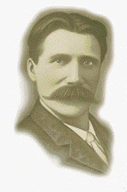![]()
|
|
|
|
|
|||||

Success Stories
The J. Simonson Photographic Collection
Digital Portrait of Canadian History Goes On-line
 Jacob
"Simy" Simonson's photos are part of the W.D. West Photographic Collection
acquired by the Fraser-Fort George Regional Museum in 1993. The 230 images
and 120 glass plate negatives, taken between 1910-1925, form the most
significant collection of early settlement days in British Columbia’s
Prince George region. Recently, part of this collection was digitized
for display on the Internet by a team of enterprising and creative students.
Jacob
"Simy" Simonson's photos are part of the W.D. West Photographic Collection
acquired by the Fraser-Fort George Regional Museum in 1993. The 230 images
and 120 glass plate negatives, taken between 1910-1925, form the most
significant collection of early settlement days in British Columbia’s
Prince George region. Recently, part of this collection was digitized
for display on the Internet by a team of enterprising and creative students.
The project was carried out under contract to Industry Canada’s SchoolNet Digital Collections program, which gives people 15 to 30 years of age entrepreneurial and technology-based job experience converting collections of Canadian material into digital form for display on SchoolNet. The SchoolNet Digital Collections web site has grown to become possibly the largest single source of Canadian content on the Information Highway.
Kate McCabe, project leader and Coordinator , Technical Services, for the Fraser-Fort George Regional Museum, said "many of Simonson's images capture important firsts in the community, such as the first sternwheeler, the first stage coach, and the first Fall Fair, later known as the Prince George Exhibition. Overall, his images illustrate his attachment to the land and the lives of the early settlers, each photo suggesting a story about the subject".
McCabe said digitizing the Simonson collection was a must for the Museum. A good part of the collection was on fragile, brittle glass-plate negatives. There was always the possibility that the image could separate from the glass, thus destroying the original photograph. She explained that though the Museum had a sponsor to enable it to develop prints of the collection, the sheer volume of interest made even that option a second choice. "At least 60% of research requests to this Museum involve the Simonson collection", she said. Putting it on the Internet seemed the most logical way to provide access. McCabe is proud of her project team. The Museum put a lot of trust in these people to handle the delicate negatives, and they did not let the museum down.
Allison Richards, who has an honours degree in marine biology from the University of Guelph in Ontario, was the team leader. Thanks to her SchoolNet Digital Collections contract experience, she recently landed a job as manager of the Community Access site in Ladysmith, a town south of Nanaimo, B.C. Community Access is an Industry Canada program covering part of the cost of linking communities to the Information Highway.
Richards said "the best part of the project was learning web page design". To prove her point, she recently launched her own web page. She also developed some important interpersonal and leadership skills that proved to be valuable. While working on the project, space for the four team members with their three computers was cramped. "Right there we had a dynamic problem. But we managed it and finished the job as friends," she said.
Other team members were Crystal Hildebrandt who is now pursuing studies in Ireland; Romney Hyland, now in grade 12 and hoping for a career in medicine; and, Scott McCulloch, who has a geography degree from the University of British Columbia and is now studying at the British Columbia Institute of Technology.
|
Updated: |